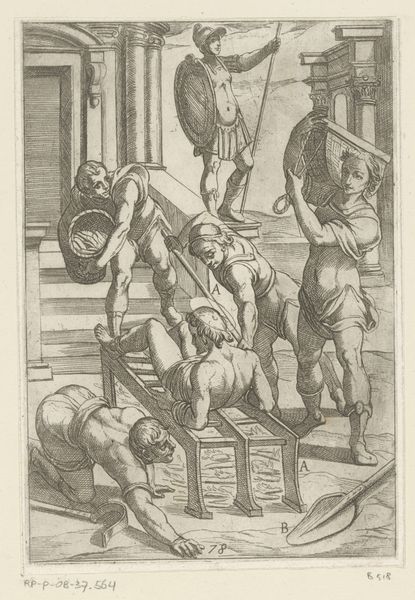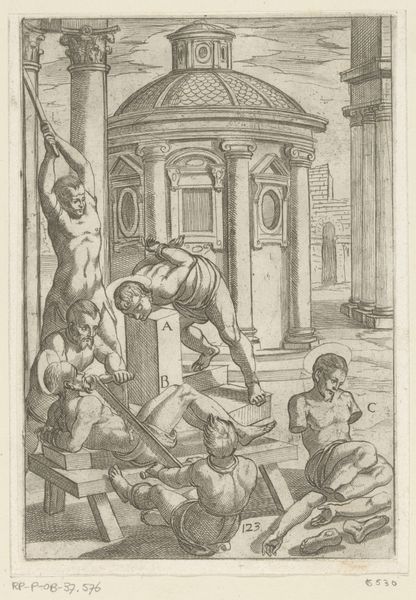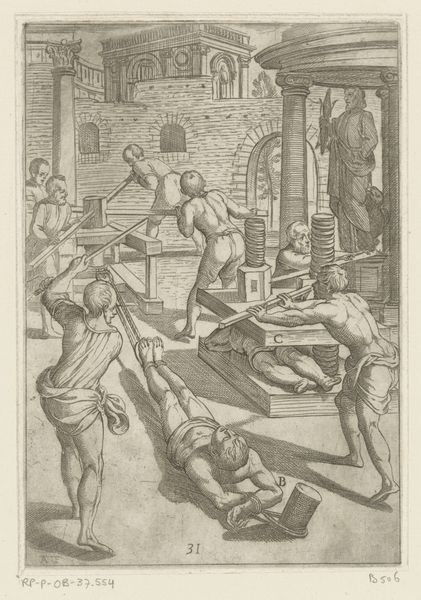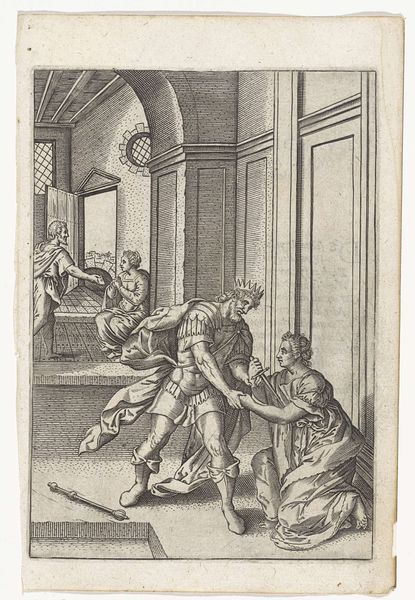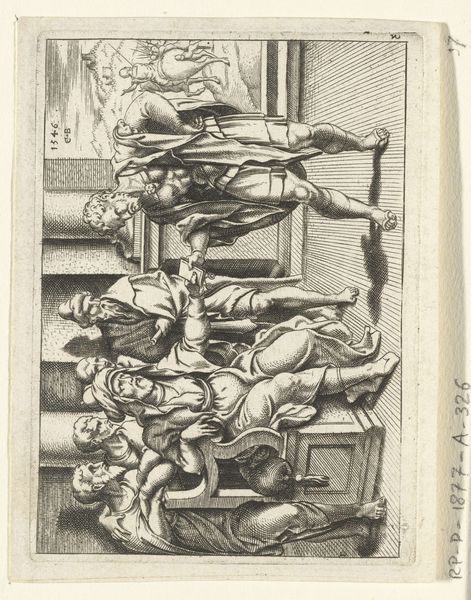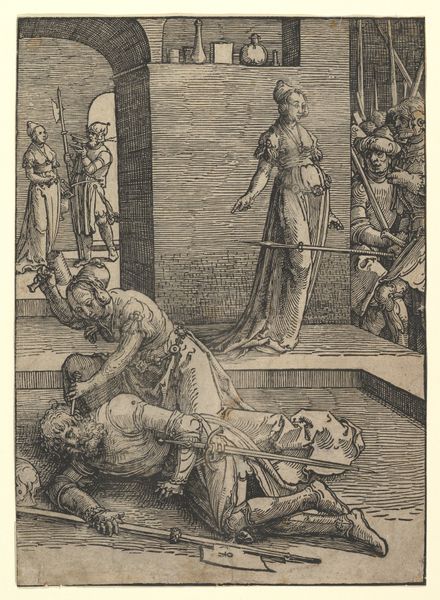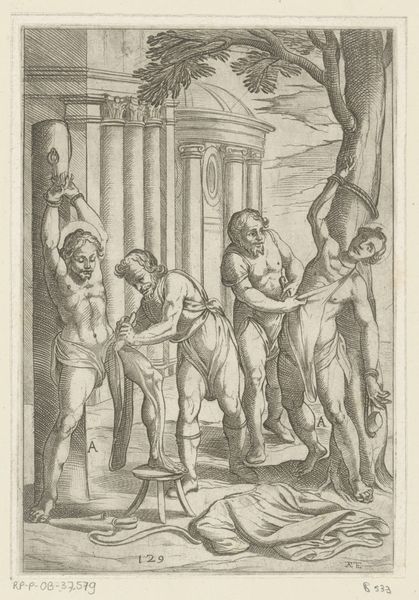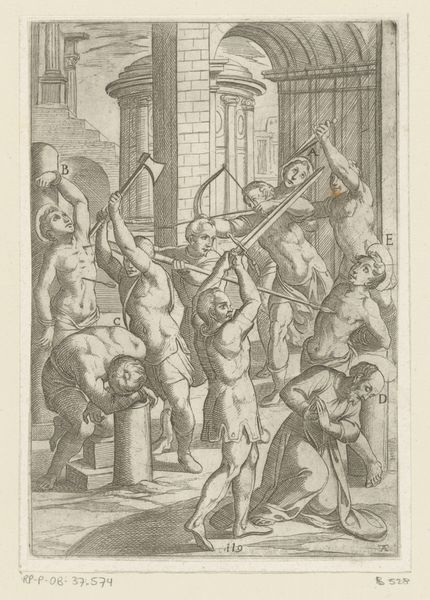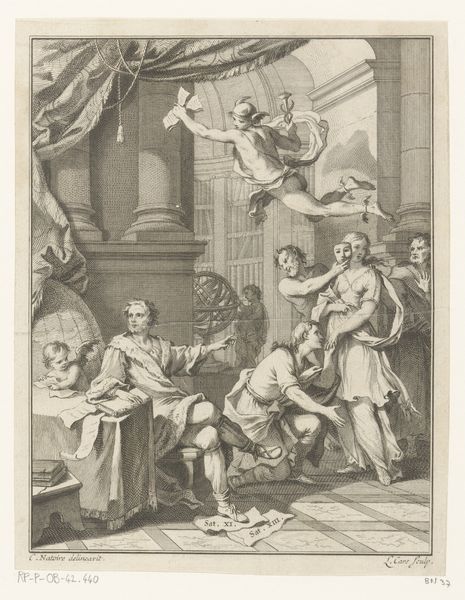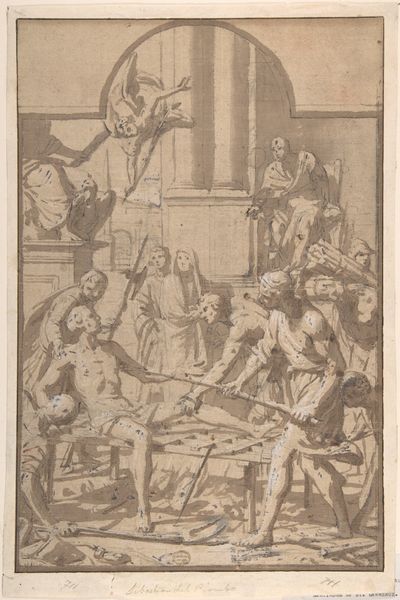
print, engraving
#
baroque
# print
#
old engraving style
#
figuration
#
history-painting
#
engraving
Dimensions: height 194 mm, width 133 mm
Copyright: Rijks Museum: Open Domain
Editor: Here we have "Foltering met bijl en beitel," or "Torture with Axe and Chisel," an engraving made sometime between 1565 and 1630 by Antonio Tempesta. It's pretty gruesome, even considering its age. The composition is stark and unsettling. What historical context informs such a brutal image? Curator: The image aligns with a period of intense religious and political upheaval. These kinds of images served very specific purposes. Consider the role printmaking played in disseminating political ideologies and religious propaganda. Who was the target audience for a print like this, and what message might it convey? Editor: I suppose the vivid depiction of torture would serve to instill fear and obedience, maybe discourage dissent, or solidify the authority of whoever's ordering the torture? But why disseminate it so widely? Curator: Exactly. The Baroque era witnessed the rise of powerful states consolidating control, often through violent means. The print's distribution fostered a culture where the spectacle of violence became normalized, even serving as a warning. It reminds viewers of the consequences of transgression against established authority, be it religious or secular. Editor: It's horrifying to think that art could be used in that way, to normalize cruelty... Were there counter-narratives in art at the time? Curator: Certainly, although access to those alternative perspectives may have been restricted for some. Artists affiliated with groups experiencing persecution often subtly incorporated dissenting messages or depicted resistance, contributing to the public's collective consciousness, challenging the dominant narrative through veiled symbolism or coded imagery. It all was about access and circulation. Editor: Wow, that completely changes how I see the role of this artwork, not just a historical record but an active player in the power dynamics of the time. I didn't think about prints as being such powerful tools of communication. Curator: Precisely. It forces us to critically examine not only what art depicts but also its socio-political role and intended audience.
Comments
No comments
Be the first to comment and join the conversation on the ultimate creative platform.

